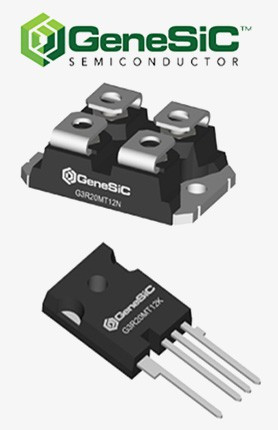Jūs turite būti prisijungę
-
sugrįžtiX
-
Komponentai
-
-
Category
-
Puslaidininkiai
- Diodai
- Tiristoriai
-
Elektroizoliuoti moduliai
- Elektrai izoliuoti moduliai | VISHAY (IR)
- Elektrai izoliuoti moduliai | INFINEON (EUPEC)
- Elektrai izoliuoti moduliai | Semikronas
- Elektrai izoliuoti moduliai | POWEREX
- Elektrai izoliuoti moduliai | IXYS
- Elektrai izoliuoti moduliai | POSEICO
- Elektrai izoliuoti moduliai | ABB
- Elektrai izoliuoti moduliai | TECHSEM
- Eikite į subkategoriją
- Lygintuviniai tilteliai
-
Tranzistoriai
- Tranzistoriai | GeneSiC
- SiC MOSFET moduliai | Mitsubishi
- SiC MOSFET moduliai | STARPOWER
- „ABB SiC MOSFET“ moduliai
- IGBT moduliai | MITSUBISHI
- Tranzistorių moduliai | MITSUBISHI
- MOSFET moduliai | MITSUBISHI
- Tranzistorių moduliai | ABB
- IGBT moduliai POWEREX
- IGBT moduliai INFINEON (EUPEC)
- Silicio karbido puslaidininkiniai elementai
- Eikite į subkategoriją
- Valdikliai
- Galios blokai
- Eikite į subkategoriją
- Elektrinių dydžių keitikliai
-
Pasyvūs komponentai (kondensatoriai, rezistoriai, saugikliai, filtrai)
- Rezistoriai
-
Saugikliai
- ABC ir AGC serijos miniatiūriniai saugikliai elektronikai
- Greitaeigiai cilindriniai saugikliai
- Uždelsimo elementai su GL/GG ir AM charakteristikomis
- Ultragreiti intarpai - saugikliai
- Didžiosios Britanijos ir JAV standartų greitaeigiai saugikliai
- Europos standarto greitaeigiai saugikliai
- Saugikliai geležinkeliui
- Aukštos įtampos saugikliai
- Eikite į subkategoriją
-
Kondensatoriai
- Kondensatoriai varikliams
- Elektrolitiniai kondensatoriai
- Snubbers tipo kondensatoriai
- Galios kondensatoriai
- Kondensatoriai DC grandinėms
- Kondensatoriai galios kompensavimui
- Aukštos įtampos kondensatoriai
- Kondensatoriai indukciniam kaitinimui
- Impulsiniai ir energijos kaupimo kondensatoriai
- DC LINK kondensatoriai
- AC / DC grandinių kondensatoriai
- Eikite į subkategoriją
- Slopinimo tinklo filtrai
- Superkondensatoriai
- Apsauga nuo viršįtampių
- Eikite į subkategoriją
-
Relės ir kontaktoriai
- Relių ir kontaktorių teorija
- Trijų fazių puslaidininkinės AC relės
- Puslaidininkinės DC relės
- Reguliatoriai, valdikliai ir jų priedai
- Soft starteriai (minkšto paleidimo įrenginiai) bei reversiniai kontaktoriai
- Elektromechaninės relės
- Kontaktoriai
- Rotaciniai jungikliai
-
Vienos fazės puslaidininkinės AC relės
- AC vienfazės puslaidininkinės relės 1 | D2425 | D2450 serijų
- AC vienfazės puslaidininkinės relės CWA ir CWD serijų
- AC vienfazės puslaidininkinės relės CMRA ir CMRD serijų
- AC vienfazės puslaidininkinės relės PS serijos
- AC puslaidininkinės dvigubos ir keturgubos relės D24 D, TD24 Q, H12D48 D serijų
- Vienfazės puslaidininkinės relės gn serijos
- AC vienfazės puslaidininkinės relės CKR serijos
- AC vienfazės relės DIN bėgiams ERDA ir ERAA serijų
- Vienfazės kintamosios srovės relės, skirtos 150A srovei
- Dvigubos kietojo kūno relės, integruotos su radiatoriumi DIN bėgiui
- Eikite į subkategoriją
- Vienos fazės puslaidininkinės AC relės spausdinimo plokštėms
- Interfejsų relės
- Eikite į subkategoriją
- Indukciniai elementai
- Radiatoriai, varistoriai, termo apsauga
- Ventiliatoriai
- Kondicioneriai, elektros spintų aksesuarai, aušintuvai
-
Baterijos, įkrovikliai, buferiniai maitinimo šaltiniai ir keitikliai
- Baterijos, įkrovikliai - teorinis aprašymas
- Ličio jonų baterijos. Individualios baterijos. Baterijų valdymo sistema (BMS)
-
Akumuliatoriai
- Panasonic įmonės akumuliatoriai
- SSB įmonės akumuliatoriai
- Sonnenschein Dryfit įmonės akumuliatoriai
- MK Battery įmonės geliniai akumuliatoriai
- FIAMM įmonės akumuliatoriai
- Victron Energy akumuliatoriai
- „Victron Energy LiFePO4“ akumuliatoriai
- „Dyno“ baterijos
- APC UPS RBC akumuliatorių paketai
- Eikite į subkategoriją
- Akumuliatorių įkrovikliai ir priedai
- UPS atsarginis maitinimo šaltinis ir buferiniai maitinimo šaltiniai
- Fotoelektros keitikliai ir priedai
- Energijos kaupimas
- Kuro elementai
- Ląstelės litio-joninės
- Eikite į subkategoriją
-
Automatikos komponentai
- Futaba Drone Parts
- Galiniai jungikliai, mikrojungikliai
- Jutikliai, keitikliai
- Pirometrai
- Skaitikliai, laiko relės, paneliniai matuokliai
- Pramoniniai apsaugos įrenginiai
- Šviesos ir garso signalizacija
- Terminio vaizdo kamera
- LED švieslentės
- Valdymo aparatūra - mygtukai ir jungikliai
-
Registravimo prietaisai
- AL3000 - įrašantis į juostą temperatūros registratorius su skaitmeniniu ekranu
- Mikroprocesoriniai registratoriai su LCD ekranu KR2000 serijos
- Registratorius KR5000
- Matuoklis su drėgmės ir temperatūros įrašymo funkcija HN-CH
- Registratorių reikmenys
- Grafinis kompaktinis registratorius 71VR1
- Registratorius KR 3000
- PC registratoriai R1M serijos
- PC registratoriai R2M serijos
- PC registratorius, 12 izoliuotų įėjimų – RZMS
- PC registratorius, USB, 12 izoliuotų įėjimų – RZUS
- Eikite į subkategoriją
- Eikite į subkategoriją
-
Laidai, pynės, laidų apsauginės žarnos, lankstūs sujungimai
- Laidai
- Daugiagisliai laidai
-
Kabeliai ekstremalioms sąlygoms
- Kompensaciniai ir prailginimo kabeliai
- Laidai termoporoms
- PT jutikliams prijungimo laidai
- Daugiagysliai laidai temp. -60C iki +1400C
- Vidutinės įtampos kabeliai
- Uždegimo laidai
- Šildymo laidai
- Viengysliai laidai temp. -60C iki +450C
- Geležinkelio kabeliai
- Šildymo kabeliai Ex zonoms
- Eikite į subkategoriją
- Apsaugos vamzdeliai
-
Pintinės
- Plokščios pintinės
- Apvalios pintinės
- Plokščios labai elastingos pintinės
- Apvalios labai elastingos pintinės
- Cilindro formos vario pintinės
- Vario cilindrinės pintinės su apsauga
- Elastingos įžeminimo juostos
- Cinkuoto ir nerūdijančio plieno cilindrinės pintinės
- PCV izoliuotos vario pintinės - temperatūra iki 85 C
- Plokščios aliuminio pintinės
- Sujungimo komplektas - pintinės ir vamzdeliai
- Eikite į subkategoriją
- Aksesuarai geležinkeliams
- Kabelių antgaliai
- Lanksčios izoliuotos šynos
- Daugiasluoksnės lanksčios šynos
- Laidų pravedimo sistemos (PESZLE)
- Gofruotos apsauginės žarnos
- Eikite į subkategoriją
- Žiūrėti visas kategorijas
-
Puslaidininkiai
-
-
- Tiekėjai
-
Pritaikymų sąrašas
- CNC staklės
- Energetika
- Energy bank
- Indukcinis kaitinimas
- Įranga ir komponentai sprogimo pavojaus zonoms (Ex)
- Kasyklos, metalurgijos ir liejimo pramonė
- Laboratoriniai ir moksliniai matavimai
- Maitinimo šaltiniai (UPS) ir lygintuvinės sistemos
- Medienos džiovinimo ir apdirbimo mašinos
- Nuolatinės ir kintamos srovės pavaros (keitikliai)
- Paskirstymo, valdymo ir telekomunikacijos spintų įranga
- Plastmasių liejimo mašinos
- Poligrafija
- Pramoninė apsaugos įranga
- Pramoninė automatika
- Suvirinimo aparatai
- ŠVOK automatika
- Temperatūros matavimas ir nustatymas
- Tramvajų ir traukinių pavaros
- Varikliai ir transformatoriai
-
Montavimas
-
-
Induktoriai
-
-
Indukciniai įtaisai
-
-
https://www.dacpol.eu/pl/naprawy-i-modernizacje
-
-
Aptarnavimas
-
- Kontaktai
- Zobacz wszystkie kategorie
Basics of Electromagnetic Compatibility: What Is It and Why Is It Important? 2 of 8

Basics of Electromagnetic Compatibility: What Is It and Why Is It Important? 2 of 8
Explanation of Electromagnetic Interference
Electromagnetic interference refers to unwanted electromagnetic signals that can affect the operation of electronic devices and systems. They come in various forms such as radio waves, electromagnetic pulses, electrical surges, or conducted disturbances.
Electromagnetic interference can have a negative impact on devices, causing errors in data transmission, loss of information, operational instability, or even complete system failure. Examples of electromagnetic interference include:
Radiated emissions: These are unwanted electromagnetic signals emitted by devices that can interfere with the operation of other devices. They can originate from electronic devices as well as external sources such as radio transmissions, television broadcasts, telecommunications, or radars.
Surges and conducted disturbances: These are sudden changes in voltage or current in the electrical network that can cause electromagnetic disturbances. They can be caused by storms, short circuits, switching of electrical devices, or improper electrical connections.
Conducted interference: These are electromagnetic disturbances that are transmitted through electrical cables and can affect the operation of other devices. They can occur, for example, due to improper cable shielding, improper wire design, or the presence of strong magnetic fields in the environment.
Understanding and explaining electromagnetic interference is important for ensuring Electromagnetic Compatibility (EMC). EMC practices involve the application of appropriate design techniques, shielding, filtering, attenuation, and cable management to minimize the impact of electromagnetic interference on the operation of devices and systems.
It is important for manufacturers and designers to consider electromagnetic interference in the early stages of the design process to avoid EMC issues. Conducting proper EMC tests and adhering to standards and regulations related to Electromagnetic Compatibility helps ensure that devices will operate correctly and will not interfere with other devices in their environment.
Examples of Sources of Electromagnetic Interference
In today's electrified and electronic world, there are many different sources of electromagnetic interference that can affect the operation of electronic devices. Here are a few examples of common sources of electromagnetic interference:
- Electronic devices
Various electronic devices such as televisions, computers, cell phones, wireless routers, or speakers can generate electromagnetic interference in the form of radiated emissions. Signals emitted by one device can interfere with the operation of other nearby devices, especially if they operate in the same frequency. - Medical equipment
Many medical devices such as magnetic resonance imaging (MRI) machines, computerized tomography (CT) scanners, electrocardiographs (ECGs), or defibrillators generate strong electromagnetic fields for diagnosing and treating patients. These fields can interfere with the operation of other electronic devices in their vicinity, so appropriate protective measures are taken in hospitals and medical facilities. - Electrical and electromechanical devices
Electric motors, transformers, compressors, fluorescent ballasts, and other electromechanical devices generate electromagnetic fields during their operation. These fields can cause electromagnetic interference in other devices located in their close proximity. - Telecommunication networks
Radio transmissions, cellular networks, satellite television, and other telecommunication systems generate electromagnetic signals that can interfere with the operation of other devices nearby. In case of improper antenna design, installation, or shielding, interference can propagate over a greater distance. - External environment
External factors such as lightning strikes, solar radiation, strong magnetic fields near transformer substations, or other sources of interference in the natural environment can affect the operation of electronic devices.
These examples show that electromagnetic interference can originate from both internal and external sources. That is why it is important to design, test, and implement appropriate protective measures and EMC principles to minimize the impact of these interferences on the operation of electronic devices.
Potential Effects of Electromagnetic Interference on Electronic Devices
Electromagnetic interference can have a range of potential effects on the operation of electronic devices. Inadequate management of interference can lead to various problems that can affect the reliability, performance, and safety of the devices. Here are a few potential effects of electromagnetic interference on electronic devices:
- Failures and damages
Strong electromagnetic interference can cause failures and damages to electronic components. For example, sudden electrical surges or electromagnetic pulses can contribute to component burnout, damage microprocessors, memory, or other critical components. - Data transmission errors
Electromagnetic interference can disrupt data transmission in communication networks. It can cause errors in information transfer, signal distortions, or even data loss. In the case of communication systems, faulty transmission can lead to disruptions in connections, deteriorated call quality, or loss of transmitted data. - Instability and operational errors
Electromagnetic interference can cause instability in the operation of electronic devices. It can result in interrupted connections, unexpected program freezes, malfunctioning sensors, or controllers. In extreme cases, it can lead to complete device failure. - Electromagnetic interference
Electromagnetic interference can cause mutual interference between different devices. If devices are not adequately resistant to interference or properly isolated, mutual interference can occur, leading to deteriorated performance and increased chances of failure. - Threat to safety
In some cases, electromagnetic interference can pose a safety hazard. For example, in the case of medical systems such as implants, interference can affect the proper functioning of these devices, which can have serious consequences for the patient.
That is why managing Electromagnetic Compatibility (EMC) is extremely important. Through proper design, testing, and adherence to EMC standards and regulations, potential effects of electromagnetic interference can be minimized, ensuring reliable operation of electronic devices.
Related product
Related posts
 Now available – DC/DC converters from PREMIUM
Now available – DC/DC converters from PREMIUM
 New release in DACPOL lighting for lathes – Kira covers
New release in DACPOL lighting for lathes – Kira covers





Leave a comment